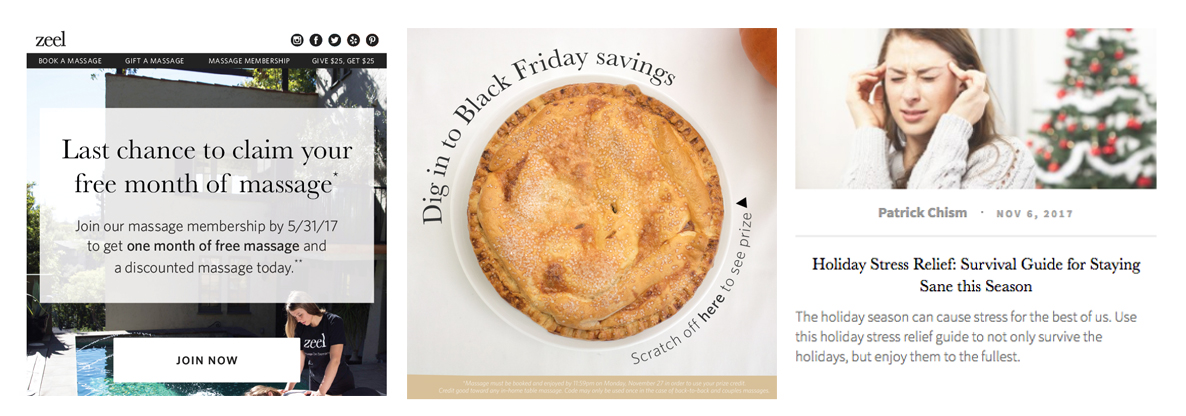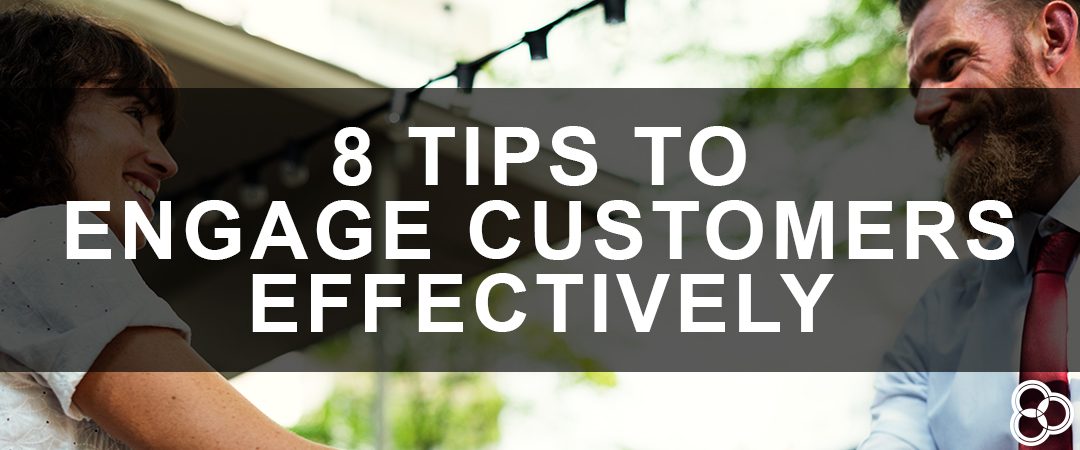Keeping your customers engaged with your business is a key component of customer retention and repeat sales.
Through your marketing you should aim to convey your personality and values in a way that keeps your customers interested in you – the trick is knowing the line between effective engagements and simply being annoying.
“The trick to engaging customers is to know what is effective and what is simply annoying them.”
Sometimes we still manage to annoy our audience rather than engage with them in the right way. If you are annoying your customers, they are not going to convert, or even worse they will unsubscribe from your engagement (i.e. Email marketing lists) and you will lose a potential touchpoint.
Here are 8 tips for engaging your customers without annoying them.
Be Easy to Contact
Make sure there are multiple ways for customers to contact you, if a customer has a problem, or a question, they don’t want to spend hours trying to figure out how to contact you.
Keep the lines of communication simple for your customers, not only does it build trust, but it gives a personal touch by letting them know there are actual people in an actual location behind your online storefront.
For example, Mountainsmith (we just launched their Magento 2 site – check it out!), has a contact link at the bottom of every page that leads to a page with information on how to contact them in a variety of ways (including their phone number, email address, physical address and where to contact for order processing questions and media questions):

Convey the Same Message in Different Ways
Consumers often have to see your messaging several times before they take action. But, repeating the same messaging over and over isn’t going to be useful, it’s just going to turn to annoying noise for your customers.
Every piece of content that you are using to engage customers does not need to revolve around a sale, rather you should create some content that provides useful content to your customer related to your business or product. Create content that becomes part of your customer’s journey.
For example, if you own an outdoor gear store and you wanted to plan a campaign around a new brand that you are now carrying, the goal of this campaign is to let customers know you have these awesome new products and eventually get them to buy them. You should start off with an email introducing the brand and some of their products to your customers, then on your social media profiles utilize customer reviews and testimonials about the products, and on your company blog you could compile a list of “10 Best Packs for Day Hikes” featuring some of the new products and post a blog (Looking for some other blog topic ideas? Check out this guide!). This is a much more well-rounded approach to engage your customers rather than sending emails or social media posts with the exact same information over and over again – as your customers would grow bored and irritated with this pretty quickly.
The in-home massage service Zeel is a good example of a well-rounded approach to engaging with their customers – they have some content that is mainly promotional (i.e. “Last chance to claim your free month of massage”), some content that aims to be useful to their customers (i.e. an article on overcoming holiday stress) and some content that is interactive.

Don’t Overwhelm Your Customers
How do you feel when you get a barrage of emails, promotions, offers, and different posts from one company? It can be extremely annoying to receive a never-ending stream of marketing campaigns.
Be mindful of your customer’s time. Create a marketing calendar for all of the different types of communication you want to send out for a given campaign and schedule them for the days and times that best suit your customers, rather than sending everything all at once. Communicate the necessary relevant information about your product, brand, or promotion – but don’t overwhelm your customers.
Understand WHO Your Customers Are
If you want to engage with your customers without annoying them – you have to KNOW who your customers are. Learning about your customer’s online behaviors, their likes and dislikes, and what their motivations and priorities are can help inform your decisions about how, when, and where to most effectively communicate with your customers.
If you haven’t already spent some time identifying your target audience, now is a good time to do that. Not sure how to perform market research to find your audience? Check out our guide.
You can also analyze data from your website’s analytics, email activity (such as tracking opens and clicks), and more so that you can tailor your marketing to what will help your customers easily flow through the sales funnel – making them more likely to complete purchases with your store.
For example, most email services will provide you tracking that allows you to see how many emails were opened, what links were clicked on and more, allowing you to better tailor future emails to your customers.

Don’t Bad Mouth Your Competition
We’ve all heard the saying, “if you don’t have anything nice to say then don’t say anything at all.” So, this one should really go without saying – it is never acceptable to participate in this type of behavior. Talking poorly about your competition can significantly negatively affect how your customers view your business. Talking trash on your competitor can cause a decrease in sales as your reputation is damaged and customers lose faith in your brand and then inevitably disengage.
Channel the energy you would have spent on a negative interaction and turn it into something positive. For example, you can use positive customer reviews in your marketing to show that you are a reputable company.
Don’t Make Promises You Can’t Keep
This one is simple – don’t promise what you can’t actually deliver. There are tons of companies with ads that boast big promises, but if you can’t make good on what you are offering, then you are just engaging your customers to let them down.
For example, this ad from internet marketer Neil Patel boasts how to get a huge number of visitors in a month without ads, which is awesome if this works (this is just an example, we aren’t saying it doesn’t!), but if it doesn’t then those customers that bought into this plan are going to feel disappointed with your company and be less likely to engage with you in the future.

Understand Social Media Etiquette
Engaging customers used to be much harder before social media. Now, we are all connected at all times through our different social media profiles. Social media can be a huge benefit for businesses as a place to easily engage with customers.
However, we need to respect the people we are marketing to and the platforms we are marketing on. You can’t just simply spam posts advertising your company and products over and over – this behavior will turn people away from your brand.
Instead, post a balanced mix of relevant content to promotional material on your profiles. For example, you can engage your customers on twitter through a poll where they can vote on different things, this allows you to build engagement in a natural way while still getting your name out there.
Be Consistent and Relevant
Keep your marketing communications consistent. Your voice, branding, and frequency of engagement should be consistent across platforms (i.e. from email to social media to your company blog). A consistent presence will help your customers know when to expect content from you and send the message that your business is reliable, trustworthy, and steady.
Closing Thoughts
It’s not hard to annoy your customers with less than favorable marketing tactics. Learning how to fit your marketing to your customer’s needs and preferences will help you build positive engagement with your audience.
Want to start engaging your customers and reaching your eCommerce goals? Connect with a member of our strategy team today – via contact form, our live chat feature (check out the little orange button in the bottom right!) or give us a call at: 303.473.4400

About Kelly Mason
Kelly is a Marketing Assistant at Customer Paradigm. She loves creating engaging and educational content and connecting with the community through social media. Outside of the office, she can be found eating her way through Colorado one brunch at a time and hiking in Rocky Mountain National Park.

